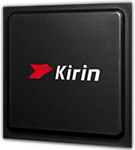
HiSilicon Kirin 710A Benchmark, Test and specs
Last updated:
The HiSilicon Kirin 710A has 8 cores with 8 threads and is based on the 5. gen of the HiSilicon Kirin series. The processor was released in Q2/2020. The HiSilicon Kirin 710A scores 302 points in the Geekbench 5 single-core benchmark. In the Geekbench 5 multi-core benchmark, the result is 1,338 points.
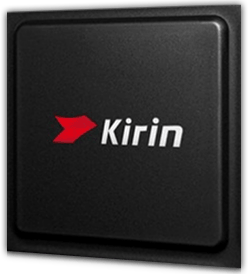
| Name: | HiSilicon Kirin 710A |
|---|---|
| Family: | HiSilicon Kirin (29) |
| CPU group: | HiSilicon Kirin 710A (1) |
| Architecture: | Cortex-A73 / Cortex-A53 |
| Segment: | Mobile |
| Generation: | 5 |
| Predecessor: | -- |
| Successor: | -- |
CPU Cores and Base Frequency
The HiSilicon Kirin 710A has 8 CPU cores and can calculate 8 threads in parallel. The clock frequency of the HiSilicon Kirin 710A is 2.00 GHz. The number of CPU cores greatly affects the speed of the processor and is an important performance indicator.
| CPU Cores / Threads: | 8 / 8 |
|---|---|
| Core architecture: | hybrid (big.LITTLE) |
| A-Core: | 4x Cortex-A73 |
| B-Core: | 4x Cortex-A53 |
| Hyperthreading / SMT: | No |
|---|---|
| Overclocking: | No |
| A-Core Frequency: | 2.00 GHz |
| B-Core Frequency: | 1.60 GHz |
Internal Graphics
The HiSilicon Kirin 710A has integrated graphics, called iGPU for short. Specifically, the HiSilicon Kirin 710A uses the ARM Mali-G51 MP4, which has 128 texture shaders and 8 execution units. The iGPU uses the system's main memory as graphics memory and sits on the processor's die.
| GPU name: | ARM Mali-G51 MP4 |
|---|---|
| GPU frequency: | 0.65 GHz |
| GPU (Turbo): | 1.00 GHz |
| Compute units: | 8 |
| Shader: | 128 |
| Hardware Raytracing: | No |
| Release date: | Q2/2018 |
| Max. displays: | 2 |
|---|---|
| Generation: | Bifrost 1 |
| Direct X: | 11 |
| Technology: | 12 nm |
| Max. GPU Memory: | 4 GB |
| Frame Generation: | No |
Hardware codec support
A photo or video codec that is accelerated in hardware can greatly accelerate the working speed of a processor and extend the battery life of notebooks or smartphones when playing videos.
| h265 / HEVC (8 bit): | Decode / Encode |
|---|---|
| h265 / HEVC (10 bit): | No |
| h264: | Decode / Encode |
| VP8: | Decode / Encode |
| VP9: | Decode / Encode |
| AV1: | No |
|---|---|
| AVC: | Decode / Encode |
| VC-1: | Decode / Encode |
| JPEG: | Decode / Encode |
Memory & PCIeThe processor can use up to 6 GB memory in 2 (Dual Channel) memory channels. The maximum memory bandwidth is --. The memory type as well as the amount of memory can greatly affect the speed of the system. |
|
| Memory type: | Memory bandwidth: |
|---|---|
| LPDDR4 LPDDR3 | -- -- |
| Max. Memory: | 6 GB |
| Memory channels: | 2 (Dual Channel) |
| ECC: | No |
| PCIe: | |
| PCIe Bandwidth: | -- |
Thermal ManagementThe thermal design power (TDP for short) of the processor is 5 W. The TDP specifies the necessary cooling solution that is required to cool the processor sufficiently. The TDP usually gives a rough idea of the actual power consumption of the CPU. |
|
|---|---|
| TDP (PL1 / PBP): | 5 W |
| TDP (PL2): | -- |
| TDP up: | -- |
| TDP down: | -- |
| Tjunction max.: | -- |
Technical details
The HiSilicon Kirin 710A is made in 14 nm. The smaller the manufacturing process of a CPU, the more modern and energy-efficient it is. Overall, the processor has 1.00 MB cache. A large cache can greatly speed up the processor's speed in some cases such as games.
| Technology: | 14 nm |
|---|---|
| Chip design: | Chiplet |
| Socket: | -- |
| L2-Cache: | -- |
| L3-Cache: | 1.00 MB |
| AES-NI: | No |
| Operating systems: | Android |
| Virtualization: | None |
|---|---|
| Instruction set (ISA): | Armv8-A (64 bit) |
| ISA extensions: | -- |
| Release date: | Q2/2020 |
| Release price: | -- |
| Part Number: | -- |
| Documents: | -- |
Rate this processor
Benchmark results

The benchmark results for the HiSilicon Kirin 710A have been carefully checked by us. We only publish benchmark results that have been created by us or that have been submitted by a visitor and then checked by a team member. All results are based on and fullfill our benchmark guidelines.
Geekbench 5, 64bit (Single-Core)
Geekbench 5 is a cross plattform benchmark that heavily uses the systems memory. A fast memory will push the result a lot. The single-core test only uses one CPU core, the amount of cores or hyperthreading ability doesn't count.

|
AMD A6-3500
3C 3T @ 2.40 GHz |
||

|
AMD Athlon II X3 415e
3C 3T @ 2.50 GHz |
||
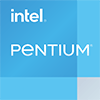
|
Intel Pentium T4300
2C 2T @ 2.10 GHz |
||
|
|
HiSilicon Kirin 710A
8C 8T @ 2.00 GHz |
||
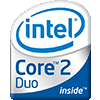
|
Intel Core2 Duo E6600
2C 2T @ 2.40 GHz |
||

|
Intel Pentium 3560Y
2C 2T @ 1.20 GHz |
||

|
Intel Celeron 1007U
2C 2T @ 1.50 GHz |
||
Geekbench 5, 64bit (Multi-Core)
Geekbench 5 is a cross plattform benchmark that heavily uses the systems memory. A fast memory will push the result a lot. The multi-core test involves all CPU cores and taks a big advantage of hyperthreading.

|
AMD Athlon II X4 750K
4C 4T @ 4.00 GHz |
||

|
Intel Pentium Gold 6405U
2C 4T @ 2.40 GHz |
||

|
Intel Core i5-2520M
2C 4T @ 3.20 GHz |
||
|
|
HiSilicon Kirin 710A
8C 8T @ 2.00 GHz |
||

|
Intel Core i7-4510U
2C 4T @ 2.70 GHz |
||

|
Intel Pentium Silver N5030
4C 4T @ 2.40 GHz |
||

|
AMD Athlon II X4 640
4C 4T @ 3.00 GHz |
||
Geekbench 6 (Single-Core)
Geekbench 6 is a benchmark for modern computers, notebooks and smartphones. What is new is an optimized utilization of newer CPU architectures, e.g. based on the big.LITTLE concept and combining CPU cores of different sizes. The single-core benchmark only evaluates the performance of the fastest CPU core, the number of CPU cores in a processor is irrelevant here.
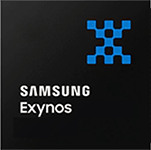
|
Samsung Exynos 7885
8C 8T @ 2.20 GHz |
||

|
Intel Pentium E5200
2C 2T @ 2.50 GHz |
||

|
Intel Celeron 1037U
2C 2T @ 1.80 GHz |
||
|
|
HiSilicon Kirin 710A
8C 8T @ 2.00 GHz |
||

|
Intel Pentium 2117U
2C 2T @ 1.80 GHz |
||

|
MediaTek MT8183
8C 8T @ 2.00 GHz |
||

|
Intel Core i3-3217U
2C 4T @ 1.80 GHz |
||
Geekbench 6 (Multi-Core)
Geekbench 6 is a benchmark for modern computers, notebooks and smartphones. What is new is an optimized utilization of newer CPU architectures, e.g. based on the big.LITTLE concept and combining CPU cores of different sizes. The multi-core benchmark evaluates the performance of all of the processor's CPU cores. Virtual thread improvements such as AMD SMT or Intel's Hyper-Threading have a positive impact on the benchmark result.

|
Intel Celeron G4920
2C 2T @ 3.20 GHz |
||

|
Intel Core i3-2125
2C 4T @ 3.30 GHz |
||

|
Intel Core i5-2520M
2C 4T @ 3.20 GHz |
||
|
|
HiSilicon Kirin 710A
8C 8T @ 2.00 GHz |
||

|
Intel Core i5-3610ME
2C 4T @ 2.70 GHz |
||

|
MediaTek Helio X30
10C 10T @ 2.60 GHz |
||

|
Intel Core i3-2120
2C 4T @ 3.30 GHz |
||
iGPU - FP32 Performance (Single-precision GFLOPS)
The theoretical computing performance of the internal graphics unit of the processor with simple accuracy (32 bit) in GFLOPS. GFLOPS indicates how many billion floating point operations the iGPU can perform per second.

|
AMD A4-4300M
AMD Radeon HD 7420G @ 0.66 GHz |
||

|
Intel Celeron G1820
Intel HD Graphics (Haswell GT1) @ 1.05 GHz |
||

|
Intel Celeron G1820T
Intel HD Graphics (Haswell GT1) @ 1.05 GHz |
||
|
|
HiSilicon Kirin 710A
ARM Mali-G51 MP4 @ 1.00 GHz |
||
|
|
HiSilicon Kirin 710
ARM Mali-G51 MP4 @ 1.00 GHz |
||

|
Qualcomm Snapdragon 630
Qualcomm Adreno 508 @ 0.65 GHz |
||

|
Intel Core i7-2610UE
Intel HD Graphics 3000 @ 0.85 GHz |
||
AnTuTu 9 Benchmark
The AnTuTu 9 benchmark is very well suited to measuring the performance of a smartphone. AnTuTu 9 is quite heavy on 3D graphics and can now also use the "Metal" graphics interface. In AnTuTu, memory and UX (user experience) are also tested by simulating browser and app usage. AnTuTu version 9 can compare any ARM CPU running on Android or iOS. Devices may not be directly comparable when benchmarked on different operating systems.
In the AnTuTu 9 benchmark, the single-core performance of a processor is only slightly weighted. The rating is made up of the multi-core performance of the processor, the speed of the working memory, and the performance of the internal graphics.
In the AnTuTu 9 benchmark, the single-core performance of a processor is only slightly weighted. The rating is made up of the multi-core performance of the processor, the speed of the working memory, and the performance of the internal graphics.

|
Qualcomm Snapdragon 662
8C 8T @ 2.00 GHz |
||

|
MediaTek Helio P70
8C 8T @ 2.10 GHz |
||

|
MediaTek Helio P60
8C 8T @ 2.00 GHz |
||
|
|
HiSilicon Kirin 710A
8C 8T @ 2.00 GHz |
||

|
Qualcomm Snapdragon 665
8C 8T @ 2.00 GHz |
||

|
Qualcomm Snapdragon 460
8C 8T @ 1.80 GHz |
||

|
UNISOC T700
8C 8T @ 1.80 GHz |
||
AnTuTu 8 Benchmark
The AnTuTu 8 Benchmark measures the performance of a SoC. AnTuTu benchmarks the CPU, GPU, Memory as well as the UX (User Experience) by simulating browser and app usage. AnTuTu can benchmark any ARM CPU that runs under Android or iOS. Devices may not be directly compareable if the benchmark has been performed under different operating systems.
In the AnTuTu 8 benchmark, the single-core performance of a processor is only slightly weighted. The evaluation consists of the multi-core performance of the processor, the speed of the RAM and the performance of the internal graphics.
In the AnTuTu 8 benchmark, the single-core performance of a processor is only slightly weighted. The evaluation consists of the multi-core performance of the processor, the speed of the RAM and the performance of the internal graphics.

|
Qualcomm Snapdragon 665
8C 8T @ 2.00 GHz |
||

|
Samsung Exynos 9610
8C 8T @ 2.30 GHz |
||

|
MediaTek Helio P60
8C 8T @ 2.00 GHz |
||
|
|
HiSilicon Kirin 710A
8C 8T @ 2.00 GHz |
||

|
MediaTek Helio P65
8C 8T @ 2.00 GHz |
||

|
Qualcomm Snapdragon 660
8C 8T @ 2.20 GHz |
||

|
Qualcomm Snapdragon 660 non LTE
8C 8T @ 2.20 GHz |
||
Benchmarks

Geekbench 5 (SC)
2,488 entries
2,488 entries

Geekbench 5 (MC)
2,461 entries
2,461 entries

Geekbench 6 (SC)
1,755 entries
1,755 entries

Geekbench 6 (MC)
1,703 entries
1,703 entries

FP32 SP (iGPU)
2,026 entries
2,026 entries

AnTuTu 9 Benchmark
90 entries
90 entries

AnTuTu 8 Benchmark
118 entries
118 entries
Popular comparisons
back to index



